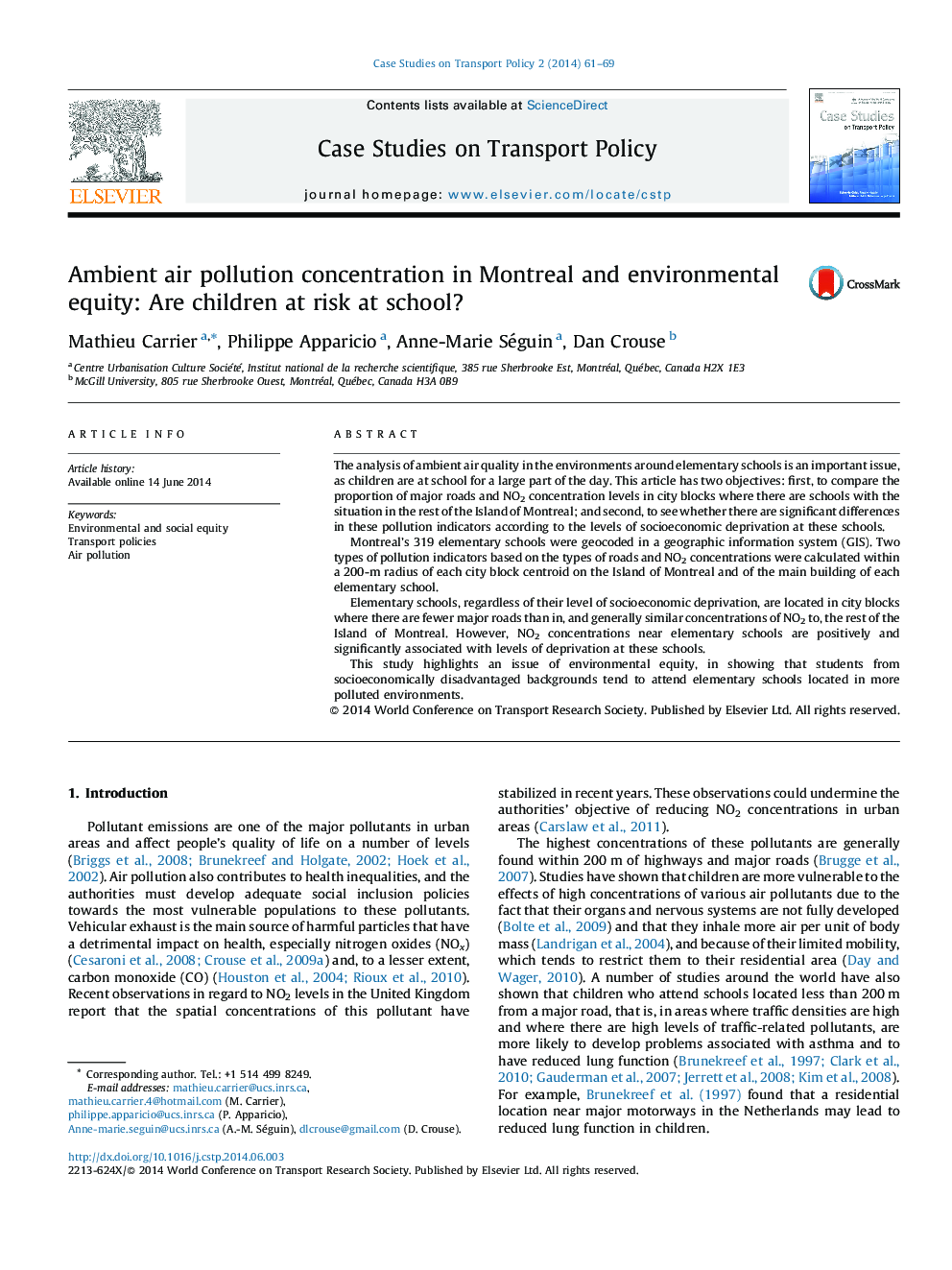| Article ID | Journal | Published Year | Pages | File Type |
|---|---|---|---|---|
| 250695 | Case Studies on Transport Policy | 2014 | 9 Pages |
•Elementary schools are located in city blocks where there are fewer major roads.•NO2 concentrations near schools are positively associated with levels of deprivation at these schools.•Schools with a higher index of deprivation tend to be located in the most polluted areas.
The analysis of ambient air quality in the environments around elementary schools is an important issue, as children are at school for a large part of the day. This article has two objectives: first, to compare the proportion of major roads and NO2 concentration levels in city blocks where there are schools with the situation in the rest of the Island of Montreal; and second, to see whether there are significant differences in these pollution indicators according to the levels of socioeconomic deprivation at these schools.Montreal's 319 elementary schools were geocoded in a geographic information system (GIS). Two types of pollution indicators based on the types of roads and NO2 concentrations were calculated within a 200-m radius of each city block centroid on the Island of Montreal and of the main building of each elementary school.Elementary schools, regardless of their level of socioeconomic deprivation, are located in city blocks where there are fewer major roads than in, and generally similar concentrations of NO2 to, the rest of the Island of Montreal. However, NO2 concentrations near elementary schools are positively and significantly associated with levels of deprivation at these schools.This study highlights an issue of environmental equity, in showing that students from socioeconomically disadvantaged backgrounds tend to attend elementary schools located in more polluted environments.
